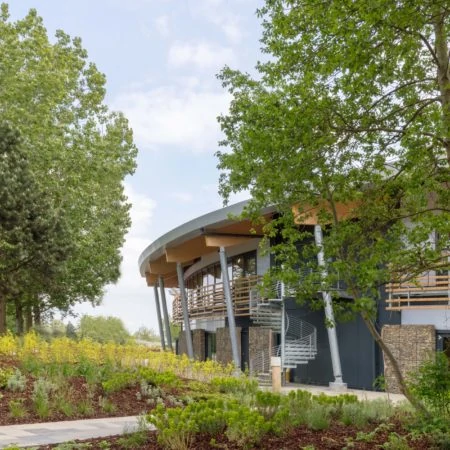So we’re in another national lockdown – and once again the return to offices looks uncertain. But with a new year comes a chance to re-evaluate what we’ve left behind and make our resolutions for the year to come. None of us will miss the challenges of 2020, yet it brought us a working from home revolution that will impact the rest of our lives.
This is especially true for us as workplace designers. As we look back at what we’ve gained and lost when working remotely, we can see that in some ways distance has made the heart grow fonder – the office still has a strong future. We miss socialising and collaborating with our colleagues, the dedicated facilities and the focused workspaces free from the distractions of everyday life. In 2021 our task will be enticing employees back to offices, and to do this we must experiment and focus on enhancing the employee experience first and foremost: enter the experiential office.
Getting back to work
While all of us will have enjoyed skipping the commutes, ready access to our fridges, and the extra time spent with family – there have also been distractions. Unreliable internet connections, daily chores or home-schooling have for many added an extra layer of pressure to our day jobs. No-one is expecting things to return to how they were before, but many of us will relish the chance to spend some time with colleagues in a dedicated work environment.
“Now is the time to embrace the experience of a shared workplace. This means creating a place people want to travel to, with specialised facilities and a bespoke atmosphere.”
For businesses, too, having employees back in offices will bring benefits. While productivity on the whole has not been impacted by the shift to remote working, we have lost the experience of collaborating with colleagues and connecting with the business, its culture and values. People enjoy having a shared purpose and a sense of belonging, and this motivates and inspires their work – but this can be tricky to maintain from kitchen tables or spare rooms.
So now is the time to embrace the experience of a shared workplace, while accepting that a form of hybrid working is set to continue. This means creating a place people want to travel to, with specialised facilities and a bespoke atmosphere. A more flexible, higher quality, work environment that is a positive space to meet, work and collaborate.
Freedom and function are the future
Achieving this goal means putting function first: introducing dedicated, ‘branded’ spaces – each with a unique identity and not all directly related to work. This might be a space for socialising with colleagues over food and drink that helps break down the digital distance we’ve been subjected to, or ‘sanctuary’ spaces that are tech free – immersive green areas where employees can take a break from the daily tasks. These non-work spaces at the office are an element we can import from our homeworking experiences without diluting the effectiveness of the workplace.
“Happy and healthy employees are also productive and creative employees. Lower stress levels, more collaboration, and the ability to concentrate and focus where required – all achieved by looking differently at the places in which we work.”
The second key element to making an appealing and experiential office is choice – and by extension, people’s wellbeing. Employees need to be able to work in the way that best suits them, and have different spaces for different times, feelings, and types of task. This is better for business and the individuals. Examples range from private concentration areas to collaborative spaces or zones designed for digital interaction such as video calls. This will help make office portfolios more flexible and able to respond to any future disruptive change, as well as ensuring that employees feel valued and find it easier to feel part of a shared purpose.
The benefits are clear to see. Happy and healthy employees are also productive and creative employees. Lower stress levels, more collaboration, and the ability to concentrate and focus where required – all achieved by looking differently at the places in which we work. The office of 2019 was already worlds away from the grey workstations of the past. The experiential office of 2021 and beyond will take our workplaces to another level. One where every employee can work in a way that is tailored to them – and one where, just maybe, we look forward to that morning commute.

This article is by Simon Marett
Simon is a director at LOM who specialises in workplace design. He has 30 years of professional experience working on commercial buildings, interior design projects and workplace roll-outs across the UK, Europe and the Middle East.

This article is by Chiara Cantilena
Chiara is an associate at LOM with a special interest in materials and their innovative application in both architecture and interiors. She pays particular attention to user experience, collaborative work and interaction spaces and how they contribute to communicating corporate identity and values.




